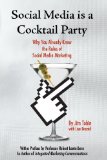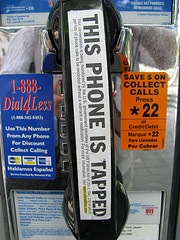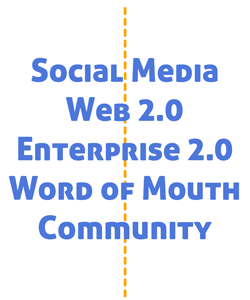Cultural barriers to social media success
I came across two posts today about corporate culture issues that can limit a company's success with social media. The interesting thing is that similar issues arise whether your work is internally or externally focused. Benefitting from social media in a business requires more than a technology deployment and a single, clued-in group.
Josh Hallett writes about the risks of customer-facing blogs setting high expectations that the rest of the company can't meet:
Company A (think cell phone company) has a really great, personable blogger that really connects with customers online. However Company A also has about 1000 call center reps and 20,000 associates in the field. The majority of them have the traditional corporate attitude, i.e. "Not my department" - "I can't help you, call customer support" etc...
Lee White describes similar cultural barriers to social media adoption inside an enterprise:
If I were able to magically snap my fingers and have a world-class social media platform in place, I don't believe that it would go anywhere, at least not immediately, in a fundamentally authoritarian culture.
Jerry Bowles identified the threat that motivates resistance in why CEOs are afraid of social media:
Large-scale adoption of the architectures of participation would represent a revolutionary change in organizational dynamics because—by giving lots of individuals a voice and audience through a networked platform—they force decisionmaking to be more transparent, democratic and consensus-based.
Jerry suggested that initial projects target functional groups that are likely to be receptive to the benefits. I suggested that companies can start by trying applications that don't threaten existing power structures:
Rather than going all-out for the revolutionary applications of electronic collaboration, look for areas where new technologies can help people do their current jobs more effectively and efficiently. It doesn't have to be dangerous.
Hey, nobody said this would be easy. What would be the fun in that?
Tags: social media blogging enterprise






 Most of the
Most of the 
 Is listening
Is listening  Talking with a friend who is smart but outside of the bubble, I was surprised that one of my usual comments surprised her. If you really want to find all of the insights on social media that might be relevant to your business, you need to track down some closely related buzzwords: Web 2.0, Enterprise 2.0, community, and WOM.
Talking with a friend who is smart but outside of the bubble, I was surprised that one of my usual comments surprised her. If you really want to find all of the insights on social media that might be relevant to your business, you need to track down some closely related buzzwords: Web 2.0, Enterprise 2.0, community, and WOM. All together, now: "Companies should
All together, now: "Companies should